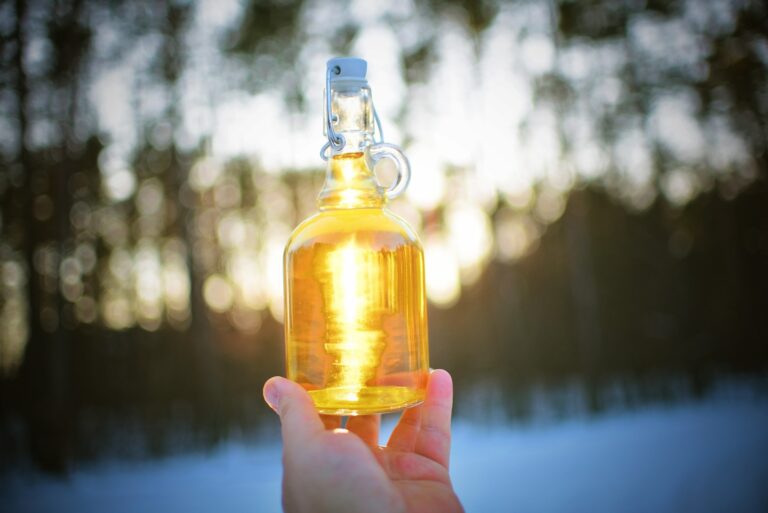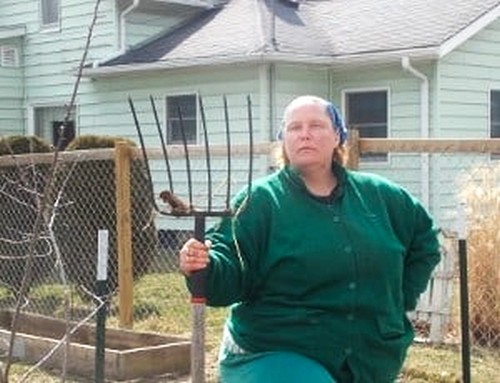Herbal tinctures, glycerites, and infusions are a great way to get the medicinal properties of herbs into a usable form.
Your herbal medicine cabinet is probably already full of different herbs in each of these forms. You will get some of the best qualities from each herb, depending on how you use them.

So, what is the difference between a tincture, a glycerite, and an infusion?
Infusions are just teas – you boil the herbs in water. Tinctures are made by soaking plants in alcohol. Glycerites are made by soaking plant matter into glycerin and water.
Infusions
When it comes to medicinal herbs, there are many different ways to administer them. Some people swear by tinctures, but many prefer the simplicity of infusions in the form of teas.
But when it comes to efficacy, infusions are generally considered to be the weakest method.
The reason for this is that not all of the herb’s helpful constituents are soluble in water, and even if they are a quick steep in boiling water is not enough to extract them all.
As a result, infusions tend to be less potent than other methods, such as glycerites or tinctures. In addition, the compounds in infusions are less bioavailable, meaning that they are less likely to be absorbed by the body.
Because of this, infusions are often used for mild conditions and ailments, and are not as effective for treating serious illnesses.
Infusions do work and are helpful, but are generally not considered to be a reliable method for delivering large quantities of medicinal herbs.
However, if you enjoy drinking herbal teas, or are just feeling a little under the weather there’s no harm in drinking them – just don’t expect them to work miracles!
Making Infusions
As I just said, an infusion is basically a tea. You extract the herb qualities by allowing the herbs to steep in boiling water for 5-10 minutes, then straining and drinking.
This is generally a gentle method for giving herbs, especially to children and babies. Common herbs that can be used in an infusion are:
- chamomile
- lemon balm
- dill seed
Simply add your choice of herbs, 2-4 grams by weight, to a large tea pot or mason jar. Add 8-16 ounces of boiling water and allow to steep for 5-10 minutes. It is best if the jar or kettle is covered.
Finally, strain the plant matter, and sweeten to taste. All of these herbs are safe to use (the only exception is chamomile if you are allergic to ragweed) and are great for colic or upset tummies.
There are a few things to keep in mind when making an herbal infusion.
First, use fresh herbs if at all possible as they will generally contain more available constituents and thus are more potent than dried herbs.
Second, make sure to use a non-reactive pot and vessel, such as glass or ceramic.
And finally, don’t let the infusion boil for too long over direct heat, as near contact with the surface of the vessel might damage the herbs.
Tinctures
Assuming you don’t mind ingesting alcohol in the first place, alcohol is an excellent solvent for making tinctures.
When cut with water, it helps to extract the active compounds from any herbs that you might use and its efficacy at dissolving both acidic and basic constituents means you can be sure that your resulting tincture will be maximally effective.
Because of this, herbal tinctures made with alcohol are more potent and have a longer shelf life than those made with other solvents such as water alone or glycerin.
Alcohol also has the added benefit of acting as a potent preservative, and it prevents the growth of bacteria. This makes alcohol the de facto choice if you want to make a tincture in any quantity suitable for long term storage.
Despite all these advantages, it isn’t all good news when using alcohol for tinctures.
Alcohol, even weaker alcohol, has a way of damaging or denaturing some of the essential resources you are trying to extract in the first place. Proteins will be “pickled” and polysaccharides are also negatively affected.
Of particular note, aromatic components will be also be damaged or degraded. This is why you might see some tinctures that have been aged for years only to lose their original color and odor.
Making Tinctures
The ratio of dried herbs to alcohol is most often 1:5, meaning for every gram of herb, you are using 5 ml of alcohol.
When choosing an alcohol for making a tincture, your only consideration is that it is 1.) safe for human consumption and 2.) strong enough to dissolve the constituents in your herbs.
Never, ever use any alcohol that has added chemicals or solutions that would make it patently unsafe for human consumption, e.g. ether, propylene glycol and other substances sometimes used to make tinctures in laboratory settings.
The general rule of thumb is to use higher proof stuff. For most herbs, this will be at least 80 proof, but some really resinous herbs might require stronger proof alcohol.
If you are unsure, it is always better to be cautious and use a weaker alcohol until you get a success; the really strong stuff still packs a wallop when consumed!
Though you can always add water later to dilute the tincture and make it more palatable if needed this will necessarily weaken its effects in turn.
The cheap, bottom shelf alcohol is fine for this. Some common herbs that are best used in tincture form are:
- echinacea
- astragalus
- elderberry
Always measure the herbs by weight when making tinctures for medicinal purposes.
The reason for this is that some herbs, while useful, can be toxic in high concentrations. You also want to get the right ratio for the “job” you need it to do.
There’s nothing worse than taking an herbal tincture to help with cold symptoms, only to find you aren’t taking enough to do anything, right?
Glycerites
Glycerites are much like tinctures, only they use glycerin instead of alcohol. Making glycerite involves taking the dried herb and infusing it in a mixture of 75% glycerin and 25% water to extract the herb qualities.
A glycerite is a good choice for those who do not wish to use alcohol in any form. Glycerin is a sweet, vegetable based medium that can make “the medicine go down” easier for kids.
Making Glycerites
Most often, glycerites are a 1:2 ratio of dried plant matter to a glycerin/water mixture.
This means if you are infusing 10 grams of dried herbs, you would add 20 ml of liquid in the ratio of 15 ml of glycerin and 5 ml of water. 5ml is about a teaspoon.
You will often need to “crush down” the herbs into the liquid as it may not seem like enough to cover them.
Allow the glycerite to infuse for 4-6 weeks, then strain. Store in a cool, dry place out of sunlight for 6-12 months.
The dosing for glycerites, as is with tinctures, will depend on the herb. Some common glycerites will be made from:
- Lavender
- Blue hyssop
- Echinacea
As you can see, tinctures, glycerites, and infusions are all beneficial to the herbal medicine chest. What are some of your favorite ways to use herbs?

Heather’s homesteading journey started in 2006, with baby steps: first, she got a few raised beds, some chickens, and rabbits. Over the years, she amassed a wealth of homesteading knowledge, knowledge that you can find in the articles of this blog.
Learn more about Heather and the rest of the writers on this page.

Infusions are generally made by weighing out an ounce of dried herbs into a quart-sized Mason jar, pouring in boiling water and letting it sit for 4-8 hours, then straining out the plant matter and drinking the resulting liquid. Common herbs used for infusions are nettle, oatstraw, hybridized comfrey, red clover and linden.